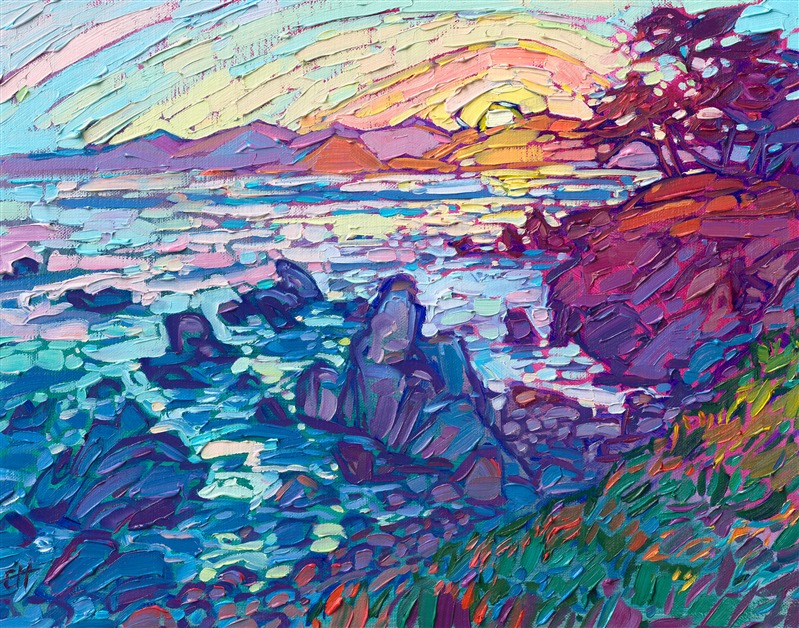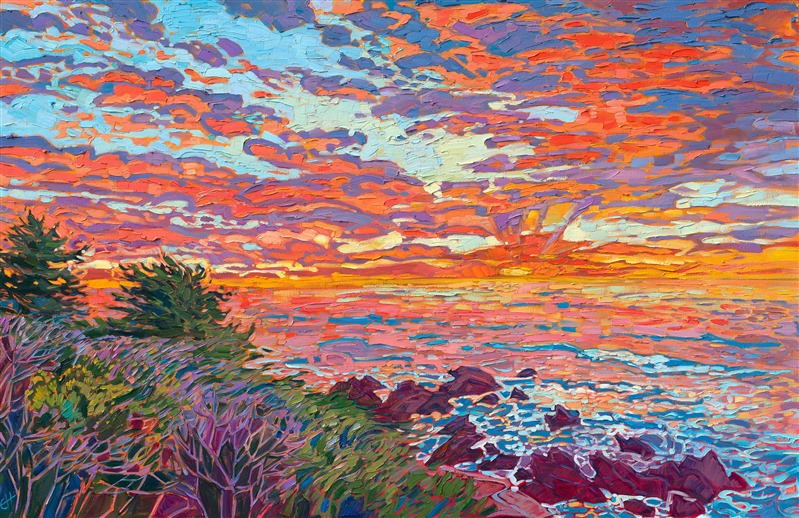Subtotal
$0
U.S. Shipping
FREE
Saved for Later
Shopping Cart
Subtotal
$0
U.S. Shipping
FREE
Saved for Later
The term “impressionism” often conjures up images of van Gogh’s sunflowers, Monet’s waterlilies, and luncheons with Renoir. These paintings are beautiful, rich in color, and depict everyday scenes from the period.
On the other hand, the first painting most people think about when hearing “expressionism” is The Scream by Edvard Munch. Other classic expressionist paintings like Der Blaue Reiter by Kandinsky and Large Blue Horses by Marc showcase expressive movement and brilliant color. These expressionist works and many others use movement, color, and style to evoke emotion in both painter and viewer.
Both styles of painting are evocative, rich with imagery and color, and completely fascinating.
Impressionism dates from the late 1800s, while expressionism was developed in the early 1900s. With a century of art between the development of expressionism and the present, the question often arises: are the two art forms ever mixed?
The brief answer to this question is “Yes.”
The longer answer requires one to look back at the roots of both art forms - and what the artists in each period were hoping to accomplish with their work.
The Beginnings of Impressionism
Impressionism completely remade the art world. This painting style came out of a time when photography was also coming into vogue, reducing the need for classical paintings that perfectly depicted the world.
The apocryphal story of impressionism comes from Monet’s naming of his work, Impression, Sunrise. This piece depicts hazy early morning light cast over a silvery port. The sun itself is a brilliant red that reflects off the water, and all other shapes in the piece are hazy and difficult to make out. It’s a fascinating piece that art critics absolutely abhorred upon first inspection.

Impression, Sunrise by Claude Monet (Found on My Modern Met)
Many critics specifically mocked the name of the painting, the use of the term “impression” was intended by curators as a form of mockery. One critic, Jules Castagnary, even captured the essence of the impressionist movement when attempting to mock the landscape but hit the nail on the head in regard to the very essence of the movement. He said, “They are impressionists in that they do not render a landscape, but the sensation produced by the landscape. The word itself has passed into their language: in the catalog, the Sunrise by Monet is called not landscape, but impression. Thus they take leave of reality and enter the realms of idealism.”
This idea of capturing an ephemeral moment, an impression of the world around you in just a flicker of time, is the very idea of impressionism.
Impressionism became a movement in the 1870s, and from it spawned many other art movements that took the idea of capturing something ephemeral in paint to new levels. This leads us to expressionism.
The Beginnings of Expressionism
Expressionism as a distinct movement emerged out of Germany in 1905. This art style focuses more on expressing how a particular moment or circumstance made the artist feel. The original expressionist movement was notable for visual intensity. The artists used rough, rapid brushwork, jagged lines, and jarring colors.
This movement continued to remain in vogue through and immediately after World War I. During that time, artists in many different genres used the principles of expressionism to share their inner concerns, feelings, and dramas. Expressionist books, poetry, and plays all utilized the idea of showcasing inner feelings through outer artworks to express the artist’s thoughts, feelings, and opinions.

Self-Portrait with a Chinese Lantern Plant by Egon Schielez (Found on www.thecollector.com)
While expressionism became an official movement in the early 1900s, this art style didn’t begin with the expressionist movement. Indeed, one only needs to view van Gogh’s famous painting The Starry Night to see an impressionist painter using an expressionist style. It seems unlikely that van Gogh ever experienced a flickering moment that looked like the world of The Starry Night, but he expresses his inner world through the painting.
How the Two Styles Have Intertwined
Painters and other artists from van Gogh to Munch to Klimt used expressionism and other artistic styles to both express and evoke deep feelings.
Impressionism and expressionism are rarely mixed in modern art, as paintings have become more abstract over time. However, contemporary artist Erin Hanson has utilized the principles of both styles to create her open impressionism movement.
This art style uses the principles of impressionism with the movement, vibrant colors, and emotion found in expressionism. Each piece utilizes textured paints in unmixed hues to capture an impression of an ever-moving landscape. The paintings attempt to encapsulate both the landscape and the feelings one gets when outdoors, in nature.

Yellow Maple by Erin Hanson

Dawning Saguaro by Erin Hanson

Dappled Coast by Erin Hanson

Coastal Mist by Erin Hanson

Sunset Fire by Erin Hanson
You can see how Hanson uses color and texture to mix expressionism and impressionism in a new, contemporary art form by viewing her portfolio here.
Additionally, the references listed in this article include two previous Erin Hanson articles that explain more about open impressionism and share a retrospective look at the development of this art form. You can read more about open impressionism along with more stories about impressionism and expressionism by following the linked references listed below.
References:
https://www.erinhanson.com/Blog?p=What-is-Open-Impressionism
https://www.erinhanson.com/Blog?p=Retrospective-of-Open-Impressionism
https://mymodernmet.com/claude-monet-impression-sunrise/
https://www.britannica.com/art/Expressionism
https://www.theartstory.org/movement/expressionism/artworks/
Discover the artist at the forefront of modern impressionism.

About Erin
ERIN HANSON has been painting in oils since she was 8 years old. As a teenager, she apprenticed at a mural studio where she worked on 40-foot-long paintings while selling art commissions on the side. After being told it was too hard to make a living as an artist, she got her degree in Bioengineering from UC Berkeley. Afterward, Erin became a rock climber at Red Rock Canyon, Nevada. Inspired by the colorful scenery she was climbing, she decided to return to her love of painting and create one new painting every week.
She has stuck to that decision, becoming one of the most prolific artists in history, with over 3,000 oil paintings sold to eager collectors. Erin Hanson’s style is known as "Open Impressionism" and is taught in art schools worldwide. With millions of followers, Hanson has become an iconic, driving force in the rebirth of impressionism, inspiring thousands of other artists to pick up the brush.